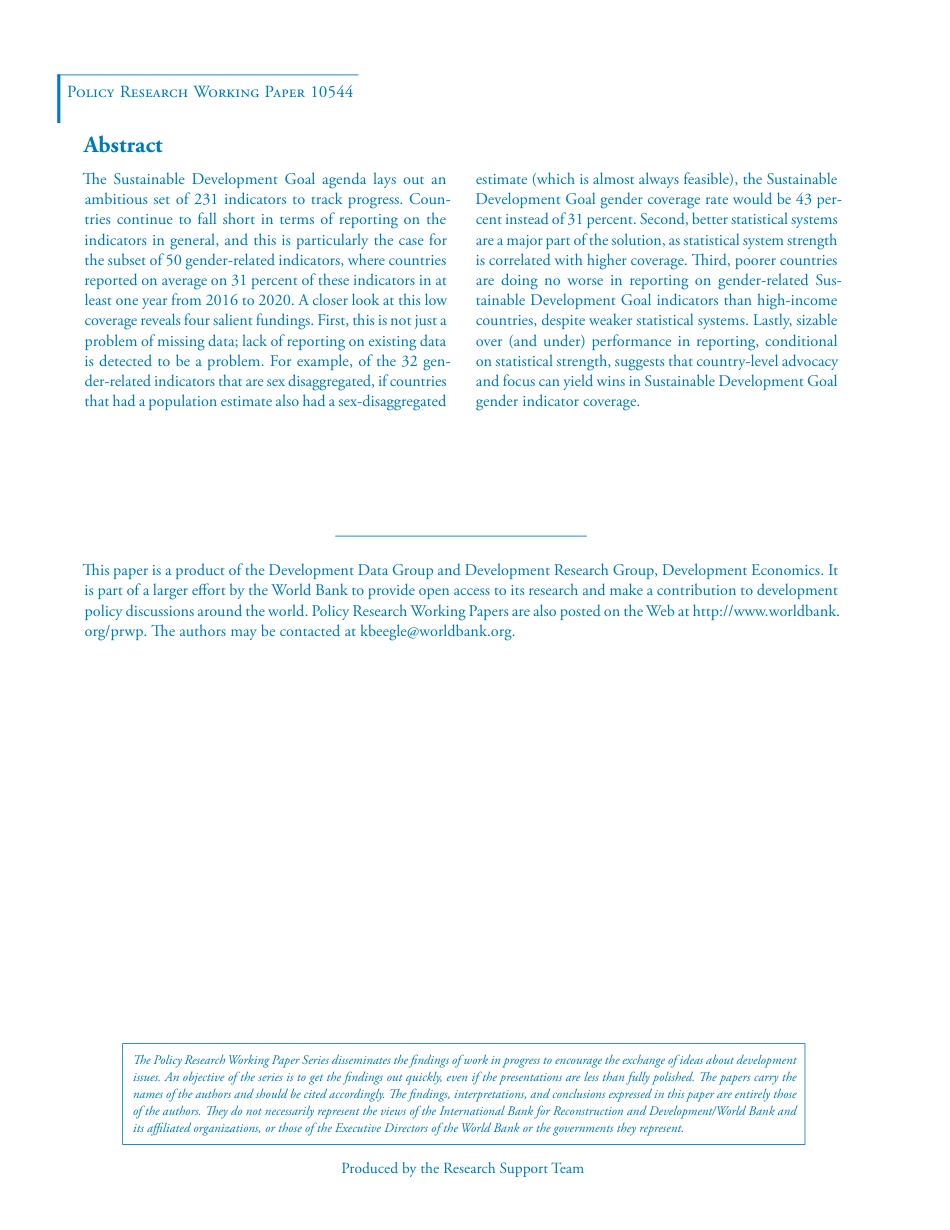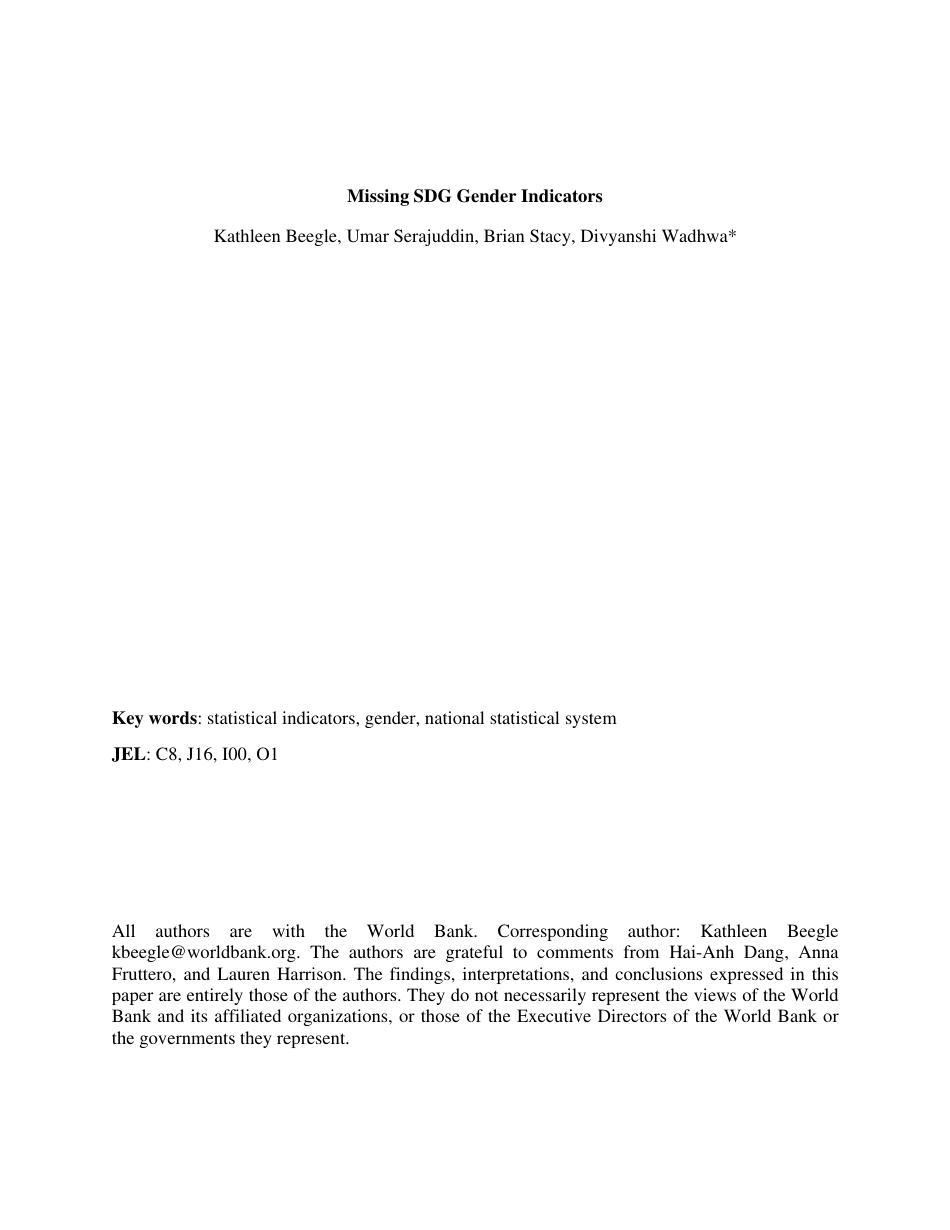Policy Research Working Paper10544Missing SDG Gender Indicators Kathleen BeegleUmar SerajuddinBrian StacyDivyanshi WadhwaDevelopment Data Group &Development Research GroupAugust 2023 Public Disclosure AuthorizedPublic Disclosure AuthorizedPublic Disclosure AuthorizedPublic Disclosure AuthorizedProduced by the Research Support TeamAbstractThe Policy Research Working Paper Series disseminates the findings of work in progress to encourage the exchange of ideas about development issues. An objective of the series is to get the findings out quickly, even if the presentations are less than fully polished. The papers carry the names of the authors and should be cited accordingly. The findings, interpretations, and conclusions expressed in this paper are entirely those of the authors. They do not necessarily represent the views of the International Bank for Reconstruction and Development/World Bank and its affiliated organizations, or those of the Executive Directors of the World Bank or the governments they represent.Policy Research Working Paper 10544The Sustainable Development Goal agenda lays out an ambitious set of 231 indicators to track progress. Coun-tries continue to fall short in terms of reporting on the indicators in general, and this is particularly the case for the subset of 50 gender-related indicators, where countries reported on average on 31 percent of these indicators in at least one year from 2016 to 2020. A closer look at this low coverage reveals four salient fundings. First, this is not just a problem of missing data; lack of reporting on existing data is detected to be a problem. For example, of the 32 gen-der-related indicators that are sex disaggregated, if countries that had a population estimate...



